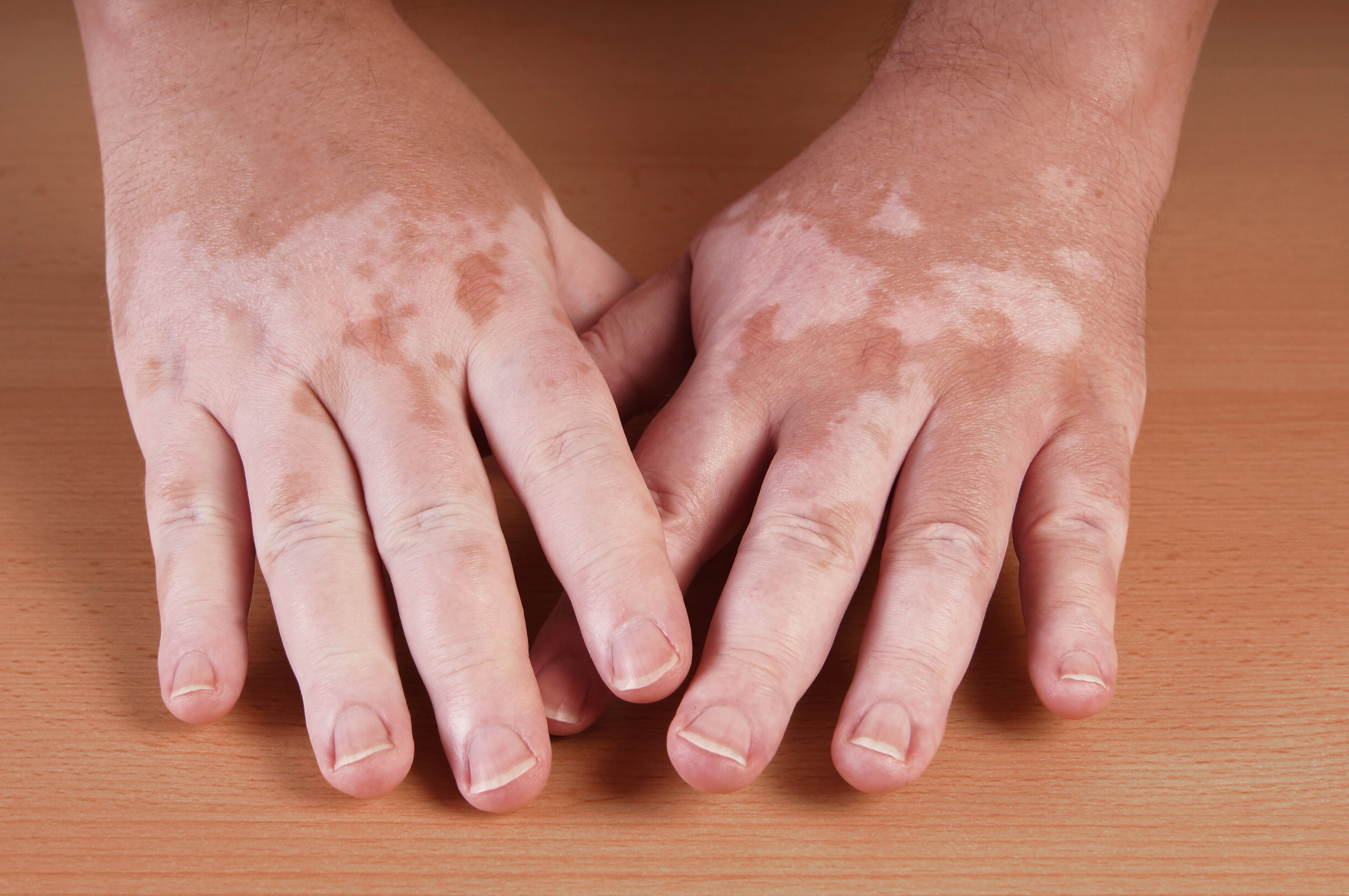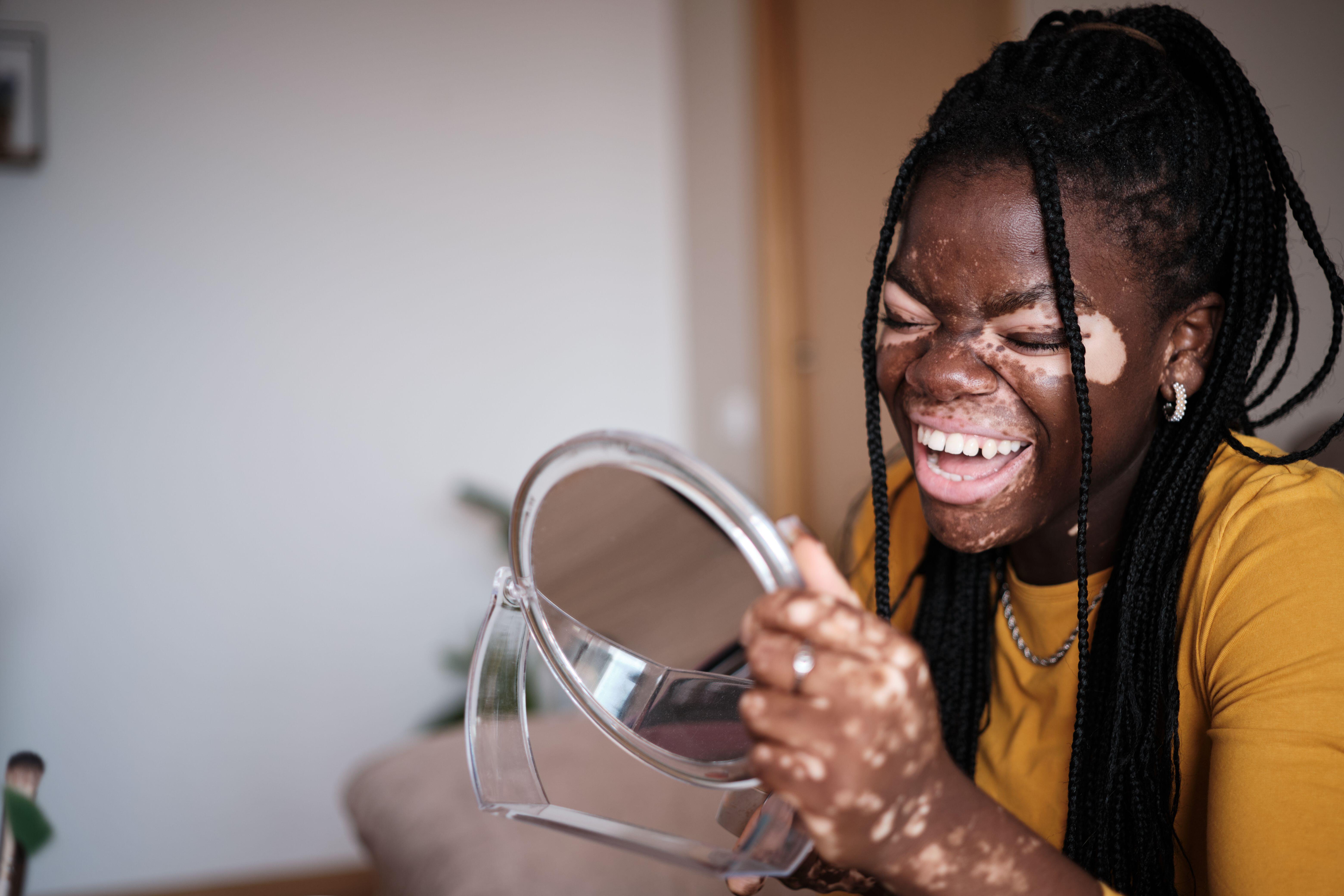This website uses cookies so that we can provide you with the best user experience possible. Cookie information is stored in your browser and performs functions such as recognising you when you return to our website and helping our team to understand which sections of the website you find most interesting and useful.
Support truly
independent journalism
Our mission is to deliver unbiased, fact-based reporting that holds power to account and exposes the truth.
Whether $5 or $50, every contribution counts.
Support us to deliver journalism without an agenda.

Louise Thomas
Editor
Kim Kardashian revealed on a podcast that her and ex-husband Kanye West’s son has been diagnosed with a skin condition called vitiligo.
Speaking on the She MD podcast, the 43-year-old US businesswoman said her son “has vitiligo very mildly” – but didn’t specify whether she was talking about her five-year-old Psalm, or eight-year-old Saint.
But what is vitiligo and how do you know if you have it?
What is vitiligo?“It is a long-term condition causing patches of skin to became paler in colour,” explains Dr Vinesh Mistry, NHS GP and doctor at One Day Tests. “There are several types of vitiligo, but usually it is classified as generalised (affecting both sides of the body) or segmental (affecting only one part or side of the body).”
The condition can affect any area of skin, but it commonly happens on the face, neck and hands, and in skin creases, according to the NHS.

“Vitiligo can affect people of any skin colour – not just people of darker skin tones or those with mixed race parents,” adds Mistry. “The condition is also not associated with skin cancer either.”
What causes it?
“It is caused by the lack of melanin pigment in the skin,” explains Dr Paris Acharya, skincare expert and co-founder of The Ardour Clinic. “Our body’s melanin is produced by skin cells called melanocytes which is what gives our skin its colour.

“Those who have vitiligo don’t have enough melanocytes to produce the level of melanin needed which is what causes the white patches to develop.
“Triggers such as severe illness, stress and chemical skin injuries may also contribute, along with a positive family history.”
What are the symptoms?
Symptoms can vary from person to person.
“Vitiligo can affect all areas of the skin – most commonly these include: wrists, armpits, neck, face, mouth, groin and hair roots too,” says Acharya. “It’s sometimes hard to label the exact symptoms of vitiligo, as the condition varies for every single person.”
Mistry adds: “Patches can be quite small initially, but generally tend to increase in size and change shape. Some people report mild itching at the site of new patches.”

Is it hereditary?
Vitiligo can be hereditary, but the pattern of inheritance is not straightforward.
“A child of a parent with vitiligo is not guaranteed to acquire the condition, says Mistry. “Even in identical twins there is no guarantee that both would be affected, which supports the theory that vitiligo has both genetic and environmental determinants.”
Do I need to see a doctor about this?
There are treatments available for patients with vitiligo – however there is no cure.
“You don’t usually need to see a doctor regarding this condition; however, if you have new skin changes, then seeking the advice of a medical professional is worthwhile,” advises Mistry. “Even though vitiligo is not serious, it can often have quite a significant impact on the mental wellbeing of affected individuals and this should be recognised and managed.
“Some creams can also help with newly forming patches and even restore pigmentation, but their effectiveness varies between individuals. Light therapy is also an option – generally safer for children.”
Acharya also recommends investing in a high-factor SPF, as the pale white areas of the skin are vulnerable to the sun’s rays.“The pale white areas of skin caused by vitiligo are more vulnerable to sunburn and sun damage,” explains Acharya. “Therefore it’s vital to take extra care when in the sun and to always use a broad spectrum, high-factor SPF.”



 Africana55 Radio
Africana55 Radio 
